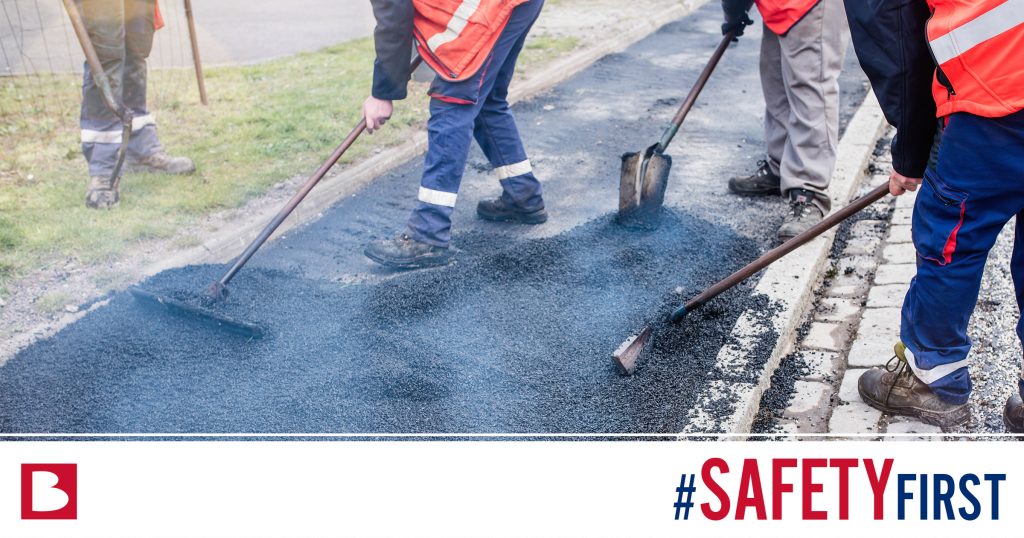The importance of worker safety is paramount. While construction sites always have dangerous hazards to navigate, winter compounds the situation by creating frigid and slippery hazards that can make injuries more common.
With a solid strategy and winter weather safety plan in place, there is a lot that can be done to keep on-site and outdoor workers safe and comfortable while keeping projects on task for delivery.
Tip #1: Recognize cold stress symptoms in yourself and others
Cold stress is a general term for cold-related illnesses that occur during periods of winter temperatures, frigid wind chills, or wetness that cause the body to dip below its normal. Some examples of cold stress illnesses include trench foot, which is caused by prolonged periods of standing in cold water or mud; frostbite, which is when the skin or bodily tissue freezes; or hypothermia, which is when the core body temperature dips below 95 degrees.
Symptoms of cold stress can sometimes be hard to spot. Individual workers should look for areas of skin that were exposed to cold water or air that are in pain, red, tingling, numb, stiff, or cramping. They should also be aware that if they shiver to the point their extremities shake, suffer slurred speech, memory loss, or sleepiness, they must get out of the cold immediately.
In both cases, it’s best to assign buddies to watch out for cold stress symptoms and strongly advocate for the safety of their co-workers.
Tip: #2 Assess and plan for winter hazards to prevent slips, trips, and falls
Snow, ice, and frozen surfaces can make hazardous surfaces even more dangerous. It’s crucial to plan for wintery weather and that each day begins with a worksite supervisor surveying the area for areas that could cause slips, trips, or falls.
All snow and ice should be cleared from work areas using shovels and either ice melt or sand. It’s best practice to mark all potential worksite trip hazards before a snowfall, so they can be seen when covered.
Assess other ice or snow-covered areas, such as rooftops, overhangs, scaffolds, and on platforms like MEWPs (aerial lifts). Whenever possible, remove the snow without sending workers onto rooftops which could not only overexert the load limit of the structure but lead to increased fall risk. If workers must clear snow from above, ensure they use proper fall safety systems and procedures.
Tip #3: Educate workers on winter-appropriate and encourage adherence
In cold weather, it’s important to dress in layers, with each garment serving a specific purpose. The clothing closest to the skin should never be cotton, but instead, a moisture-wicking material that keeps sweat away. The middle layer is designed to hold in warmth with a material like fleece being best suited for the task. The outer layer of clothing should serve to block the wind but avoid being too bulky, as all other job-related PPE will need to fit over these layers.
Proper winter construction gear also includes a lining or cover to be worn under helmets and hardhats, glove liners under task-specific or waterproof work gloves, and waterproof, insulated work boots with studded overshoes.
Also, always remind workers to have a change of clothes on the ready in case they get wet on the job. Wet clothing in cold weather is a recipe for uncomfortable and dangerous work conditions.
Tip: #4 Create warm and safe spaces for workers to take a break
Ambient heaters in tents or heated trailers are a great way to allow workers to warm up while they’re on break. Getting out of the cold is not only good for them physically but these relaxing warm-up moments are great for morale as well. When possible, provide hot beverages and meals to raise both core temperature and spirits.
To build extra comradery and get the blood flowing, you can also lead group stretching sessions a few times a day. These don’t have to be complicated, but a few simple stretches at the beginning of the day and during a break can increase blood flow and reduce muscle stiffness, which warms the body and helps prevent musculoskeletal injuries.
Tip #5: Be aware of increased safety risks from heaters
While heated spaces to relax in are crucial for worker safety on any winter worksite, you have to stay aware of the increased dangers they bring. Fuel-burning equipment can cause two major hazards: high levels of carbon monoxide and increased fire risk.
To combat this, you should always monitor the carbon monoxide levels in an enclosed, heated area. Teach your workers to monitor for symptoms of carbon monoxide poisoning as well, which can include nausea, dizziness, drowsiness, and chest tightness.
For the increased fire risk, make sure fire extinguishers are readily available and that all workers are thoroughly trained on both their location and use. Early in the season, try running safety drills to evaluate worker knowledge of these extra hazards and refresh their training appropriately.
Tip #6: Train workers for winter weather driving
Most people are somewhat familiar with navigating ice and snow in their vehicle or truck. However, work trucks are a far different beast, as anyone who has experienced pulling an empty trailer over ice can attest to. Work truck accidents can damage critical equipment, materials, and sometimes structures at your work site.
The best way to protect your workers, vehicles, and equipment is to actively train them on winter weather best driving practices. A winter defensive driving course or training session can give them the tools they need to handle hazardous winter situations safely.
Add safety kits to every work vehicle with food, water, first aid kits, blankets, sand for traction, a full spare tire, flashlights, and batteries, as well as a deicer and a windshield scraper, so no matter what winter throws at them, your workers are prepared.
Tip #7: Stay flexible as the weather changes
If working in an area known for atmospheric mood-swings, it’s wise to keep an eye on the weather forecast throughout the day and plan accordingly. Unfortunately, Mother Nature doesn’t care that we have schedules to keep, so flexibility is a must to complete jobs on schedule in the winter season.
If the forecast calls for windy or snowy conditions, especially with low wind chills, it’s best to avoid work outdoors. If you can reschedule outdoor work to a later day and complete an indoor project, shift gears to allow for that. If the schedule isn’t flexible, plan for frequent warm-up breaks with short bursts of work broken into smaller tasks.
If the temperatures start cold but are expected to warm later in the morning, consider starting work later. If snow, ice, or other dangerous conditions are present in the forecast for the evening, send workers home early so they aren’t having to travel in dangerous conditions.
As the frigid temperatures of winter get into full swing, worker safety should be paramount. With a concerted effort towards safety, education, and flexibility, work sites can make it through the winter with projects delivered on-time and without incident.


